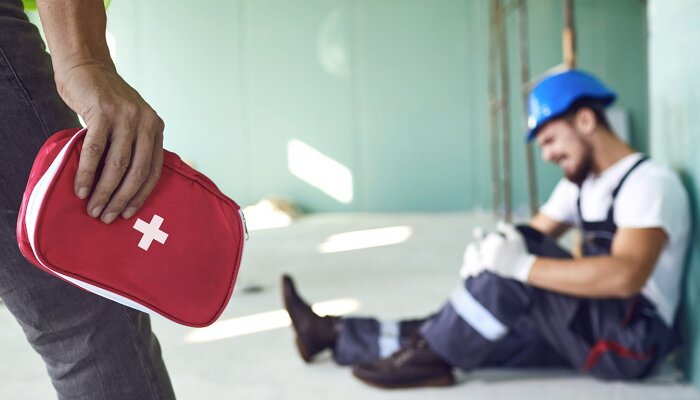Emergency first-aiders are very common in many countries. They have been set up to help people who suffer injuries in the workplace or at home.
If a person is injured, they could go to the emergency room, but that would take time, which is not always ideal because it can cause more problems. So what do emergency first aiders do?
Quickly Respond to an Emergency
An emergency first aider is someone trained to respond quickly to an emergency. They can help with minor injuries, such as cuts and bruises, and injuries from accidents. They may also be able to help with more severe emergencies, such as heart attacks and strokes.
An emergency first aider has training in first aid, CPR, and defibrillation, and how to use essential medical equipment like an automated external defibrillator (AED). They should be able to work alone until paramedics arrive or until they reach the hospital.
The primary responsibilities of an emergency first aider include:
- Assessing the situation
- Determining the best course of action
- Implementing that course of action
- Assisting others during the process
Administer First Aid
An emergency first aider can help you in an emergency. They are trained to administer first aid and can do that without proper medical training, but emergency first aid training is necessary. The Red Cross typically trains emergency first aiders, but other organizations also offer similar courses.
In most cases, emergency first aid will be required by law if you need it while working as an independent contractor because many states require workers to have some form of health insurance coverage.
You could also get specific training through any organization that offers these kinds of courses if you do not already have it through your employer or a course at school or college (for example).
An emergency first-aider can provide the following kinds of first aid:
- CPR on a person who has stopped breathing (oxygen)
- CPR on a person whose heart has stopped beating (cardiac arrest).
- Caring for someone who has been injured or has been cut or burned.
- Safety checks and first aid for people who have been injured or have been exposed to harmful chemicals.
Preserve Life
An emergency first aider is trained to help people in medical emergencies. They are also known as “casualty care professionals,” typically found in hospitals, but can also be found in the field.
The most important thing an emergency first aider does is preserve life, which means keeping their patient’s heart beating and breathing until medical help arrives. They might also use an automated external defibrillator (AED) to try to restart a stopped heartbeat.
Once they have stabilized their patient, they will run through a checklist of things they need to do before calling for help:
- Checking for signs of infection
- Checking that the airway is clear so breathing can resume
- And making sure there’s some way for them to contact someone who can assist them or get medical attention once they arrive on the scene.
Promote Recovery
An emergency first aider is trained to give immediate, lifesaving assistance to people. They can help you if you are injured and cannot move, if someone is choking or having difficulty breathing, or if someone has passed out from lack of blood flow.
The most important thing an EFA does is promote recovery. They ensure the person is not suffering from injuries that are not immediately life-threatening (like broken bones) and can respond quickly in case something changes.
And to promote recovery, a first-aider must:
- Provide immediate attention by assessing and stabilizing the patient before moving on to further treatment.
- Assess the scene for hazards such as toxic substances or electrical hazards.
- Ensure that all necessary medical equipment is readily accessible.
- Follow established protocols for treating patients with special needs, such as children and older people.
Final Thoughts
Overall, emergency first-aiders are trained to deal with various injuries, from minor cuts and bruises to more serious ones. They can provide primary care for burns and other injuries that don’t require advanced medical care and perform CPR if necessary.
If you want to get involved with helping others in the community, consider becoming an emergency first-aider—you will be doing something good while ensuring everyone stays safe.


















